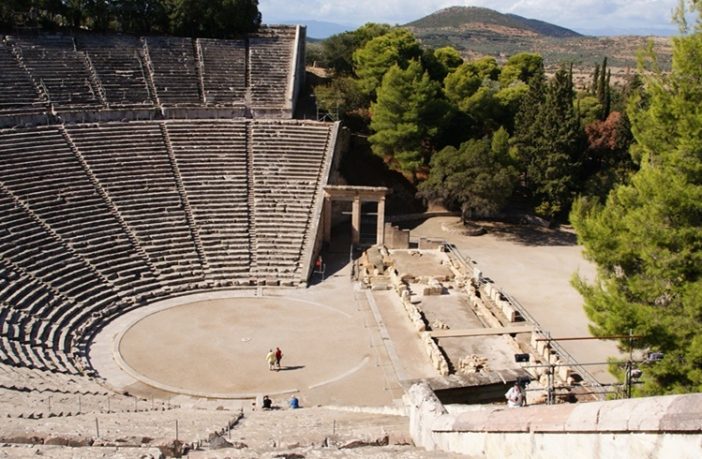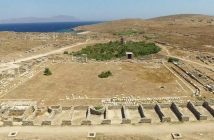In a small valley in the Peloponnesus, the shrine of Asklepios, the god of medicine, developed out of a much earlier cult of Apollo (Maleatas), during the 6th century BC at the latest, as the official cult of the city state of Epidaurus.
Its principal monuments, particularly the temple of Asklepios, the Tholos and the Theatre – considered one of the purest masterpieces of Greek architecture – date from the 4th century. The vast site, with its temples and hospital buildings devoted to its healing gods, provides valuable insight into the healing cults of Greek and Roman times. The Sanctuary is the earliest organized sanatorium and is significant for its association with the history of medicine, providing evidence of the transition from belief in divine healing to the science of medicine.
Initially, in the 2nd millennium BCE it was a site of ceremonial healing practices with curative associations that were later enriched through the cults of Apollo Maleatas in the 8th century BCE and then by Asklepios in the 6th century BCE. The Sanctuary of the two gods was developed into the single most important therapeutic center of the ancient world. These practices were subsequently spread to the rest of the Greco-Roman world and the Sanctuary thus became the cradle of medicine.
Among the facilities of the classical period are buildings that represent all the functions of the Sanctuary, including healing cults and rituals, library, baths, sports, accommodation, hospital and theatre.
The Epidaurus Asklepios Temple in Argolis, Greece’s Peloponnese peninsula, was included in the World Heritage list by UNESCO in 1988.




